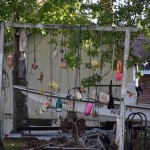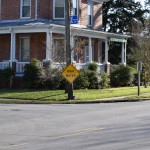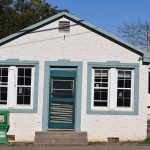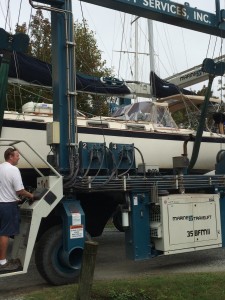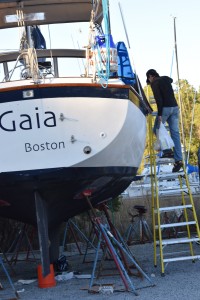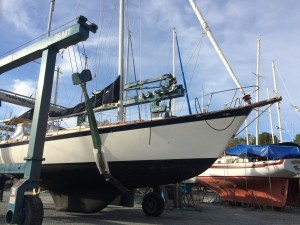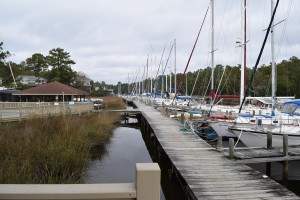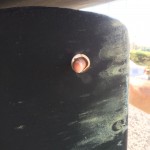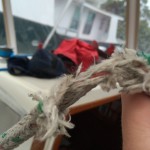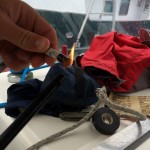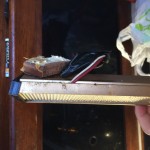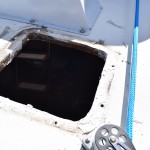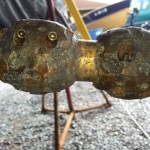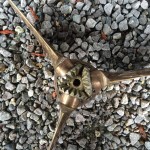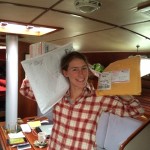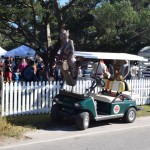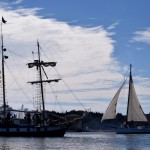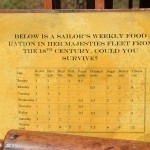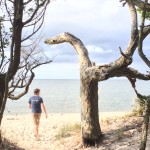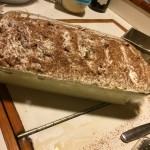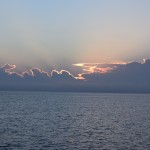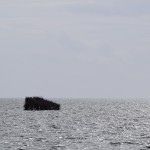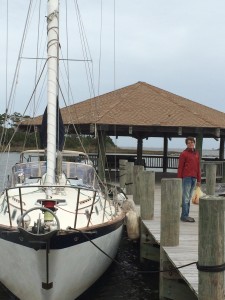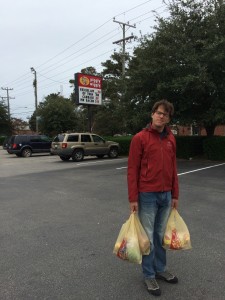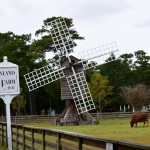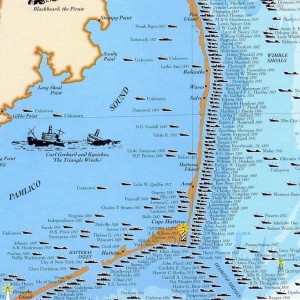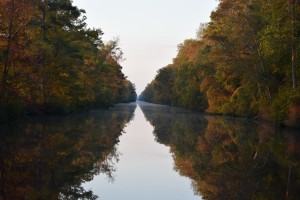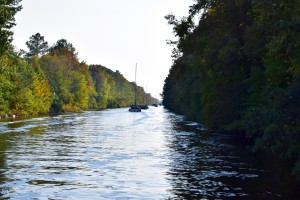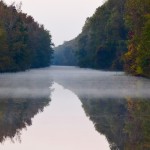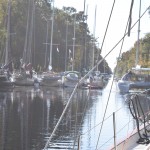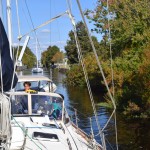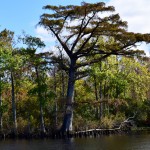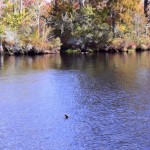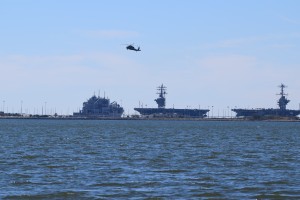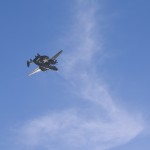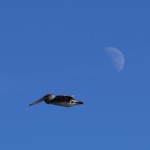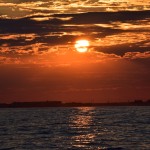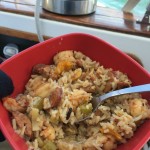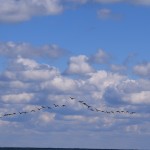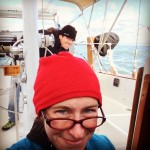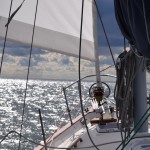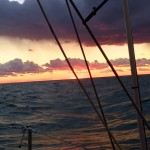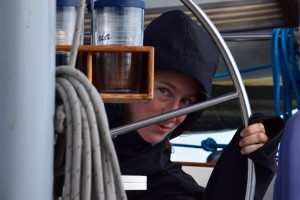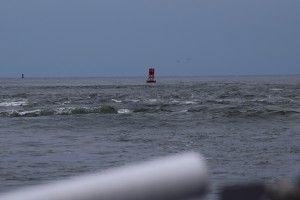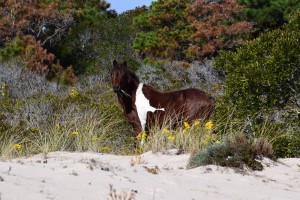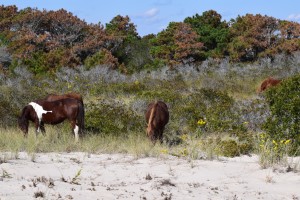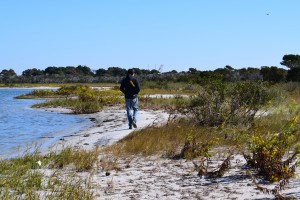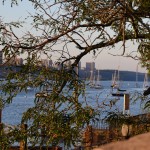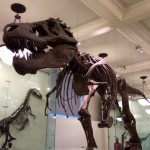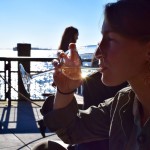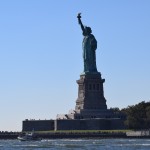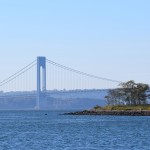The title of this post says it all but it’s rainy and cold outside and I’m a wordy writer. Let me start this post with the P to B ratio of Oriental (the Population to Boat Ratio)… 1:3ish. That’s right, 900 people and just about 2,500 boats.
Our two weeks was made wonderful by the amazing establishment and closest bar,  ‘Silos’. Open Tuesday-Saturday there’s always something on the calendar. Tuesday was BOGO day (Buy One pizza Get One free), Wednesday was open mic night, Thursday was dollar drafts, Friday was live music in the back yard (Lake Street Dive played there), Saturdays are party nights. For a community that is increasingly becoming dominated by retirees looking for a good town, this place was wildly fun. Tuesday pizza night was easily the towns favorite. We went into the hardware store and the clerk felt it necessary to alert us ‘transients’ of the phenomenal BOGO day. We also ran into two separate friends who informed us we should get to Silos early tonight to secure a good seat for BOGO. It’s pretty great to see a community come together over pizza.
‘Silos’. Open Tuesday-Saturday there’s always something on the calendar. Tuesday was BOGO day (Buy One pizza Get One free), Wednesday was open mic night, Thursday was dollar drafts, Friday was live music in the back yard (Lake Street Dive played there), Saturdays are party nights. For a community that is increasingly becoming dominated by retirees looking for a good town, this place was wildly fun. Tuesday pizza night was easily the towns favorite. We went into the hardware store and the clerk felt it necessary to alert us ‘transients’ of the phenomenal BOGO day. We also ran into two separate friends who informed us we should get to Silos early tonight to secure a good seat for BOGO. It’s pretty great to see a community come together over pizza.
Sitting in Silos, everyone is in the boat world, you work for the boat yards, you work as a fisherman, you teach boating, you race, you do canvas or boat related services (West Marine / Radio Shop). In some capacity EVERYONE we met in town is tied into this interwoven community.
In general, a great thing about boat yards are seeing all the other boats and if you’re lucky enough, meeting the owner and having a few beers together. We met a fellah named Mike from Canada and he was finishing up his entire interior. He bought his boat as a fixer-uper and the entire below deck had mildew problems (ceiling, floor, and cushions). He was a wealth of knowledge and we were grateful for all his tips on engine alignment.
Another character and incredible wealth of knowledge was the fiberglass genius, Turtle. One day I was half way on my mile walk into town to get a propane regulator when he pulled over and offered me a ride. I said sure. He pointed out historic sites in the town and recited the history. He drove me to the hardware store and then drove right past it saying I had to cross the town bridge and get a good view of the entire town. I learned his great great grand daddy founded the town and the origin of the town name came from a Civil War era ship! A few laughs later and a great tour of the town I found myself at the the hardware store.
I was wowed by the random yet sincere kindness and it didn’t stop there. Yes, my small town story continues with the hardware store…. Our propane regulator failed on us the night prior and I found two identical products that would work for the propane tank but wasn’t sure about the sizing. The owner agreed it could be either or and after a few minutes of deliberation he set his car keys on the counter and said ‘Why don’t you take my car to your boat and test out which one is right for you. When you’re done, just come back with the packaging of the one you need and the one you didn’t use. I’ll be here until 5, so no rush.’ My jaw dropped. I’d just like to mention, I’ve been living in cities for the past 13 years and am in no way accustomed to an offer as this. I let him know, I was perfectly okay with walking. My legs worked fine, it was sunny and warm… why was this man trying to lose his car and give away his products…. I would never dream of stealing a car but still…. this kindness didn’t sit right with me, it felt bizarre. And yet…. 10 minutes later I drove into the marina where Mike had a few questions for me… Yes we fixed the regulator to the propane unit. (As a side story, the damn thing began malfunctioning on the coldest night of our entire trip so far. I was going to fight the cold with BAKING! Terrible timing but that’s the way the cookie tends to crumble on a boat).
Lastly and the greatest news in our haul out was the fact that everyone said our rudder was fine ….. and we should stop being a pair of Nancies about it and sail on over to Bermuda already.
A few months earlier before our shake down sail in September, we hauled out in Salem MA. The inspector mentioned a bit of “play” between the rudder post and rudder and saw water bubbling out of the post. We had a wet rudder and he showed concern about it. We contemplated and researched all our venues of possible outcomes on the way down. We learned that FossFoam (in FL) was our go to for a new rudder. And if they had a mold already set for a Pearson 424 they just had to reconstruct the rudder which would be a HUGE cost savings. Unfortunately (or fortunately …) Pearson boats aren’t known for rudder problems. We have a skeg rudder that is essentially built solid with epoxy on the perimeter and has two or three metal arms attached to the rudder post and act as the skeleton of the rudder. Next to the metal skeleton is foam. The concern would be if the welds attaching the arms to the rudder post were corroded and broke in heavy weather. Then we would be left with a free spinning helm and no  rudder control. We drilled a hole in the top outside of the rudder in case of a rudder
rudder control. We drilled a hole in the top outside of the rudder in case of a rudder
emergency. The idea is to tie a rope through the hole and steer Captain Ron style. The following day we also asked if Turtle, expert mariner, would take a look at our boat. He did and explained how boats like ours were born (made). The woven fabric of fiber glass allows the boat to heave and move with the ocean whereas the epoxy acts as the solid rigidity. Both sides of the equation will change meaning your hull will change and you’ll see “age lines”. Over the years, your boat takes hull shuddering hits, enormous gusts bending and testing the rigging and the keel. What I found interesting was the fact that the hull shape will change when it moves from water to land. You’re engine / Vdrive shaft alignment is different on land than it is in the water. After looking Gaia over, and talking to us about boat construction for a better half of an hour, he looked at us point blank and spoke honestly. He said ocean worthy boats like this are overbuilt. The boat will last, it may sail differently if the hull were to be waterlogged balsa core but she’d still sail. He looked at our rudder and shook his head. “I wouldn’t touch the rudder if it’s working right now. If it’ll help you sleep at night, then sure. Do it if you want for that reason but other than that, you’re fine to go to Bermuda.” And it dawned on me, most of my fears were mental or because I was still novice.
- Looking off into the Neuse River
- The fish market open Saturday and Sunday only
- Backyards here got it going on. Boats liter this town
- Most houses are on some kind of stilts or platform
- Hurricane Irene flooding mark
- The house that’s been flooded one too many times.








